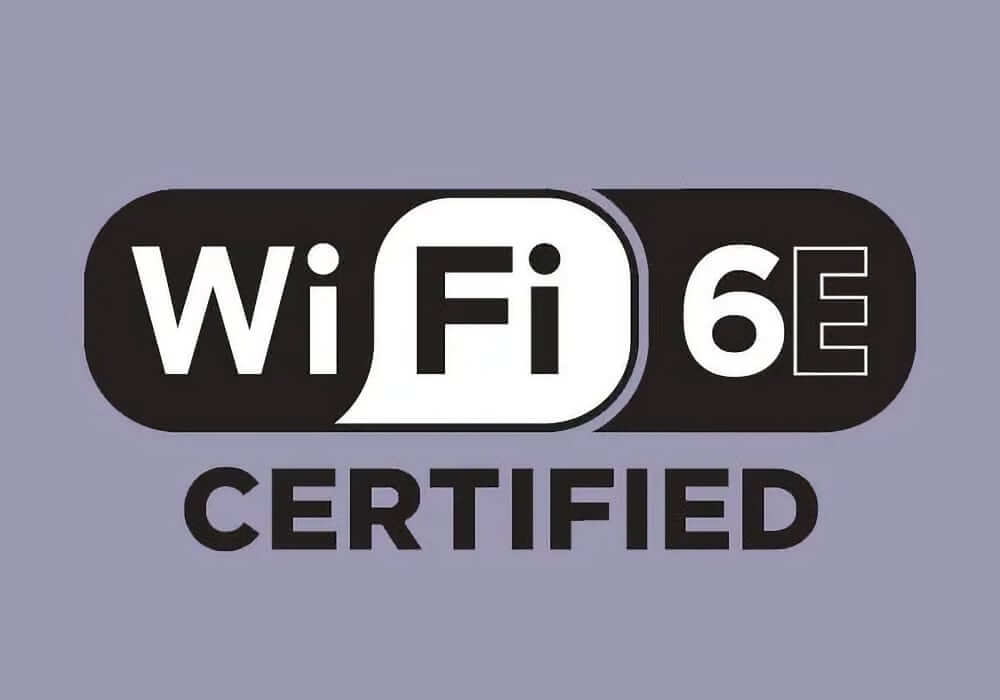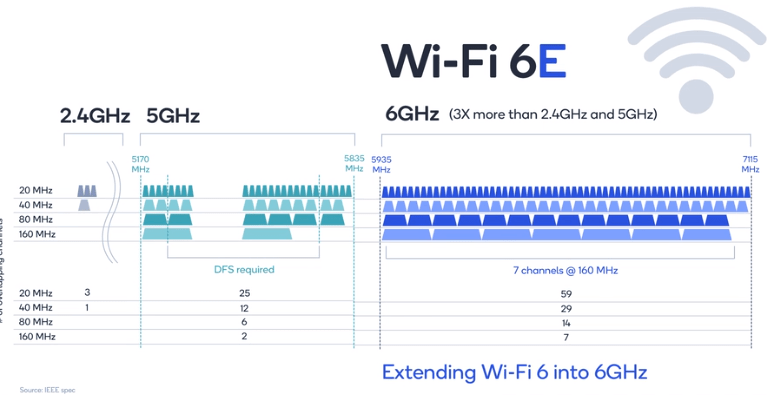We are going to explain to you what are the differences between WiFi 6 and WiFi 6E, two wireless connectivity technologies with a similar name, but which are different. WiFi 6 is a standard that was approved in 2019, while WiFi 6E is its evolution, which will arrive later this year with better features.
WiFi generations are new standards through which connectivities are gaining in speed or stability when you have an increasing number of connected devices. You should know that the operators’ routers do not usually go for the latest technologies, but if you buy other third-party routers for maximum speed, then you should take into account the type of WiFi so that the purchase lasts as long as possible.
What is WiFi 6?

WiFi 6 is a new standard for improving the WiFi network that was approved in 2019, and during 2020 it started to reach homes. It is a network compatible with previous WiFi protocols, so if you bought one of these routers, you will be able to connect to it with your devices. If they are not compatible with WiFi 6 they will not be able to benefit from its improvements.
Where there is no much difference is in the maximum connection speeds. WiFi 5 or 802.11ac has speeds of 433 Mbps per stream. Therefore, as you can see, in the speeds of a single connection the changes are not too great, because WiFi 6 does not reflect these situations so much as those where many devices are connected at the same time.
The fact is that in our homes today, we have more and more devices connected at the same time, and that is where the improvements come from. The theoretical maximum speed of WiFi 6, with 8 streams at 160 MHz, is 1000 Mbps, while WiFi 5 was 700 Mbps. Also, the average throughput of connections per user is increased 4 times for high-density scenarios.
Therefore, the enhancement of WiFi 6 does not lie so much in the maximum speed per device, but in improving the experience when we have many devices connected at the same time. Therefore having several devices connected does not end up slowing down the connection of each device so much. It also improves the latency and consumption of connected devices.
Besides, another improvement of this technology is that it can use both the 2.4 and 5 GHz bands at the same time, which allows it to unify the better coverage of one and the higher speed of the other. Thus, you will not have to decide which version of your WiFi to connect to, the 2.4 or 5 GHz, because the WiFi of the WiFi 6 routers will have the benefits of both.
WiFi 6 is also more secure, as it proposes the use of the WPA3 (Wi-Fi Protected Access 3) security protocol, which in the medium term is intended to replace WPA2. This new standard implements more effective security measures, which will greatly help to improve the security of devices connected to the network.
What is WiFi 6E?

WiFi 6E is the next generation of WiFi connections, an evolution of WiFi 6. It has not been called WiFi 7 because it is a slight evolution of the previous protocol, and it is not a revolution that brings major changes like those that occurred when moving from WiFi 5 to WiFi 6.
The main change in this new protocol is that the 6 GHz band is added to WiFi 6, which means that WiFi 6E is also known as WiFi 6 GHz. This is because the spectrum of WiFi 6 ends is the same as that of WiFi 5, and ended at 5.925GHz, without covering the spectrum of 6, and WiFi 6E is added 1.2GHz more, covering up to 7.125 GHz.
You also gain 14 additional 80MHz channels or 7 160MHz channels depending on how the router handles your connection. Note that currently only 2 channels can be configured on 160 MHz, which are the widest channels, so gaining new channels will help minimize congestion and ensure that even with many connections from many devices connectivity is not degraded.
Note that we are not talking about speed. If you have ever had problems with your WiFi because it has suddenly started to work worse, this may be because the spectrum you are using is congested. After all, there are too many devices using it even if they are not from your home, and you have to change channels. This can happen when you see that many WiFis are running near yours, and if they all use the same frequencies.
And that’s when WiFi 6E can come in to help you with that problem. Not only does it give routers a wider swath of airwaves, but you also have a more spacious swath that doesn’t require overlapping signals as happens on some current channels. The new spectrum has enough space so that up to seven full-capacity WiFi transmissions can be transmitted simultaneously and not interfere with each other, without using the previously available spectrum.
New multiplexing methods are also implemented, improving the ways signals are distributed with technologies such as MU-MIMO, which allows information to be sent to several clients concurrently, or OFDMA, which improves the ability to split a transmission into different frequencies within the same channel. In the end, this makes the connection more versatile and more usable.
Main differences between WiFi 6 and WiFi 6E

As you have seen in both descriptions, the basis of both protocols is WiFi 6. The difference is that WiFi 6E adds the 6GHz band to the normal WiFi 6. This new spectrum offers a higher connection speed when you are close to the router, but a shorter range. In any case, you will still be able to use the 2.4 and 5 GHz bands in a unified way as in WiFi 6, merging the coverage of one with the peak speed of the other.
And what are the advantages of this? Well, when you connect with a device to a router with WiFi 6E, if this device is compatible and is close to the router, you can use a 6 GHz band that gives you an extra peak speed. And if it is not a compatible device, you can still use it because these routers will keep the 2.4 and 5 GHz bands, and are backward compatible with previous WiFi technologies.
The fact that it has more channels, namely 14 additional 80MHz channels, or 7 160MHz channels means that you will have less congestion on your network. When there are many routers on the same or underlying channels, then the channel becomes saturated and the connection slows down. One solution is to change the WiFi channel of your router, and the more channels the better to avoid these “bottlenecks”.
Also, the other technologies we have talked about, such as these new multiplexing methods, make the connection within a channel more versatile, and therefore better. This technology will come in handy if in the future you want to move to 8K TVs and can send content over the network without interruptions.
This post may contain affiliate links, which means that I may receive a commission if you make a purchase using these links. As an Amazon Associate, I earn from qualifying purchases.

